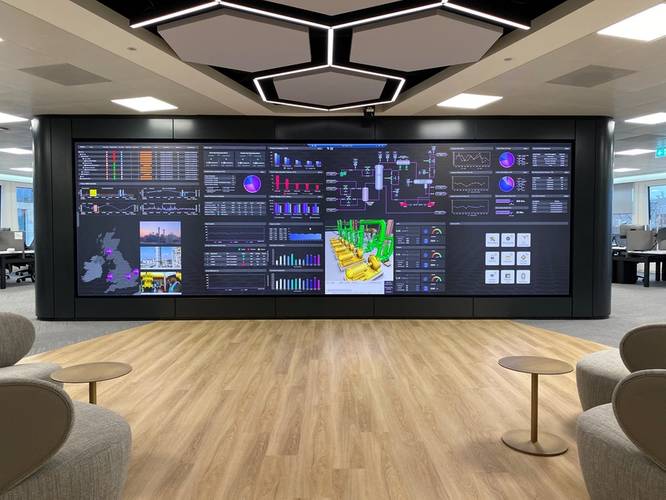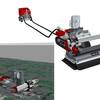Performance Intelligence: The Key to Decarbonizing Maritime
How technology can bring data to life, from design through to operations, helping improve efficiency and reduce emissions
Over the last year, climate change – or more appropriately climate action – has emerged as the critical issue impacting the future of global industries. Companies are under pressure to outline plans to transition to a more sustainable way of doing business – and the shipping and maritime communities are no exception.
Transportation emissions – which typically include road, rail, air and marine – are responsible for an estimated 24% of the world’s carbon emissions. Transport-related pollution is expected to grow at a faster rate than any other sector, putting climate targets into question. While marine accounts for only a small share of those contributions – about 3% – projections suggest it could increase to 17% by 2050. Shipping has a colossal role to play in corporate supply chains and enabling companies to meet their own net zero targets.
Sustainability is not new to shipping. In fact, The International Maritime Organization (IMO) has indicated its full support for implementing the United Nations Sustainable Development Goals and created an initial emissions strategy in 2018 aimed at reducing emissions from shipping by 50 percent compared to 2008 levels by 2050.
Companies, including AVEVA, have already started aligning efforts and shifting operations to support net zero targets. From 2019 to 2020, the number of companies and governments setting net zero targets doubled and alliances like the UN’s Race to Zero campaign – the largest ever initiative of its kind – are further spurring action.
Commitments and partnership, while an important factor in moving the needle, are only part of the equation. The hard work comes with shifting decades-long operations and processes. A challenge, to say the least, but one that can be streamlined and made efficient through digital solutions.
Accelerating sustainability through digital transformation
Realizing the sustainable industries of the future starts with accelerating the adoption of proven technologies today. Advancing a sustainable agenda across an entire industry has its challenges, but existing technology offers scalable and efficient ways to show real progress.
Technology for new shipping vessels is rapidly changing as companies consolidate, regulations become more rigorous, and shipyards globally face new challenges. Today it’s possible for ship makers and marine companies to powerfully optimise the end-to-end journey from vessel development to seaborne operations by leveraging technology, such as cloud, sensors, AI, and data analytics monitoring.
As a leader in industrial software, AVEVA has worked with maritime and other industry leaders to understand and develop digital solutions to help drive sustainability across some of the most complex and carbon-intensive sectors, including marine.
By connecting the power of information and AI with human insight, the latest solutions enable the marine sector to more effectively execute projects, providing industry-tuned features to connect the business-critical processes of engineering, design, materials, planning and construction. What’s more, such technology can turn operational data into insights for downtime analysis, monitor schedules, digitise maintenance procedures and efficiently manage asset performance.
Such software solutions are already helping to deliver 15–30 percent savings in energy costs and reduce carbon emissions by 9-15 percent, while cutting downtime by 25 percent. The goal is to help optimize production, increase energy efficiency, reduce waste, boost circularity, and maximize sustainable performance.
Shipyards and shipbuilding: Where technology and productivity meet
Shipbuilding excellence is heavily reliant on design-to-production, agility, and efficiency across all project streams, as well as effective resource management and design quality leading to error-free production. Last year, AVEVA introduced updated capabilities tailored to the marine sector to address these requirements, including the first release of the AVEVA E3D Hull Basic Design Module.
The module is used for the preliminary design of a ship's hull structure, and supports key decisions regarding naval architectural characteristics, space management, outfitting design, and drawings. It represents the most integrated 3D environment for working with as-built and as-designed data in the marine market. It was developed in response to the ever-growing and changing needs of ship owners and shipyards and provides a solution that meets sustainability goals, maximizes business agility, and improves operational performance.
An integrated design and engineering tool, the module streamlines the process, improves speed, and removes cost and complexity. The software allows marine operators to realize up to 40 percent gains in engineering efficiency. It also builds on AVEVA Unified Engineering solution, which brings together design and engineering data with 3D design tools for industrial users.
What’s more, companies have chosen to adopt AVEVA’s design software. Intuitive and easy-to-use, the package combines the latest three-dimensional graphics and user interface technologies with state-of-the-art data management. The new capabilities demonstrate continued proactive innovation, providing new tools to anticipate market needs, and offering new capabilities and greater efficiency.
Technology is a driver of innovation and provides a path to a sustainable transition. As companies look to decarbonize, maritime partners that take steps to digitize their operations will have a competitive advantage – potentially unlocking new business opportunities. Yet, the benefits go beyond business and extend to helping tackle the biggest challenge the world has faced – climate change. AVEVA and its maritime partners are steadfastly working to increase energy efficiency, minimize noxious emissions, and optimize the effective use of valuable natural resources to shape a better world.


















